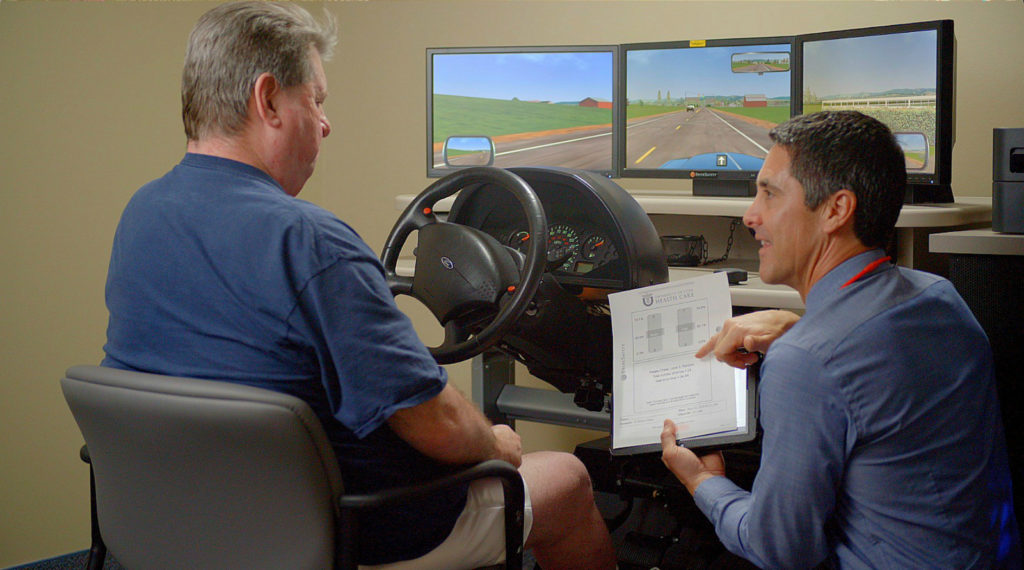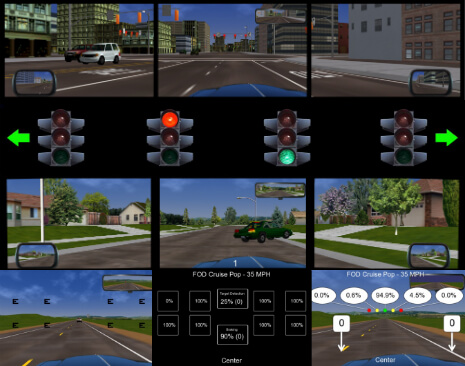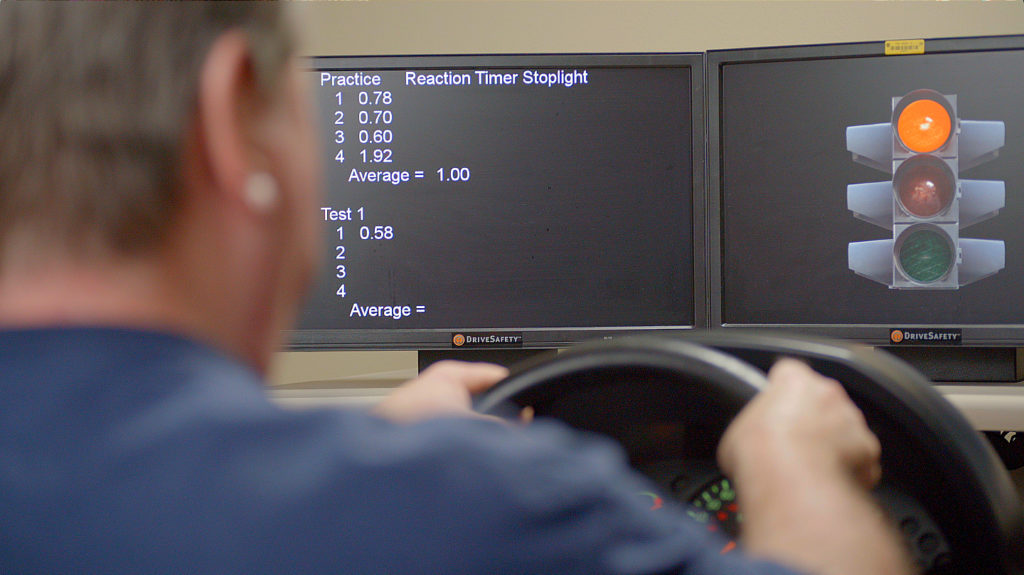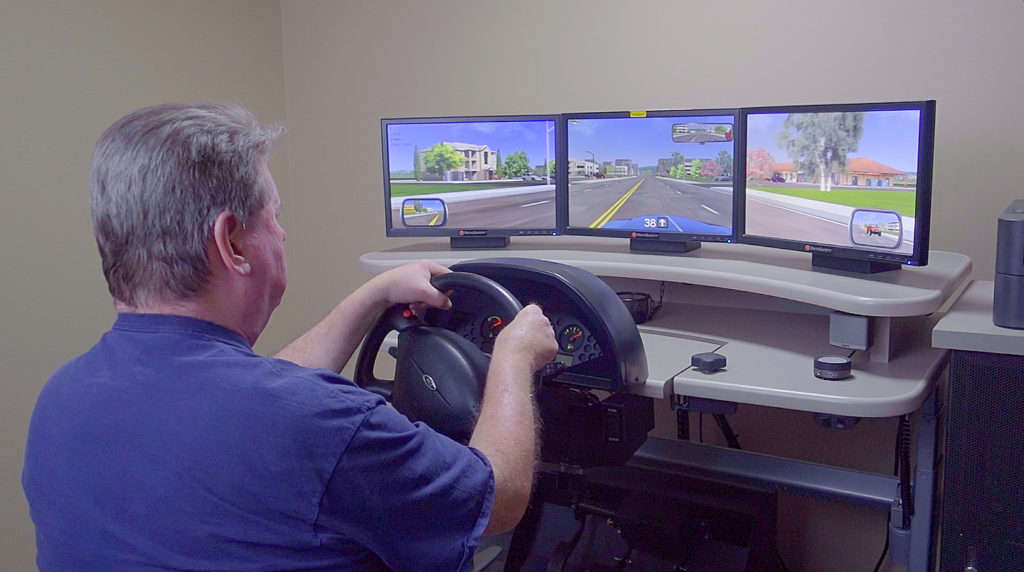Phase I: Pre-Driving Clinical Exercises, Basic Functional Abilities
This phase provides exercise and measurement of pre-driving functional abilities. Scenarios include exercises for visual information processing, coordinated movements, regulation of physical inputs, strength and range of motion, memory, and anticipation and planning.

Steering and Pedals Static
Simple upper and lower-extremity strength, range of motion and control of physical inputs
Steering Chase
More dynamic-upper extremity strength, range of motion and control of physical inputs
Pedals Chase
More dynamic-lower extremity strength, range of motion and control of physical inputs
Stoplight & Steering
Visual information processing (speed and accuracy) and coordinated muscle movements
Combined Controls
Visual-motor integration, fine motor control
Copy Cat
Working memory, coordination muscle movements
Slider
Motor planning, anticipatory thinking
Phase III: Progressive Basic Driving Skills
This phase provides progressive, fundamental driving skills development and evaluation, essential instruction and adaptation drives, plus additional training scenarios suited for basic driving rehabilitation and training.

Lane Keeping Curves*
Lane position management on road with curves
Pedals And Stopping*
Practice stopping and starting at intersections, an important adaptation step for simulator introduction
Following Distance*
Practice maintaining appropriate following (headway) distance
Turning Left*
Introduce making left hand turns at intersections
Turning Right*
Introduce making right hand turns at intersections
Merging*
Introduce merging into freeway traffic
Changing Lanes and Braking
More practice changing lanes and bringing car to a stop
Hills And Curves Speed
More speed management practice with simultaneous hills and curves
Hills And Curves Stop
Continued vehicle control practice including stopping and starting in combined hills and curves
Obstacles On Straight
Cones course exercising vehicle maneuvering and control skills
Speed Control Curves
Speed control with curves
Speed Control Hills
Speed control with hills
Training Tracks Scenarios
Simple paved closed-course tracks to allow easy, non-threatening practice of basic vehicle control
*Essential Adaptation Drives




